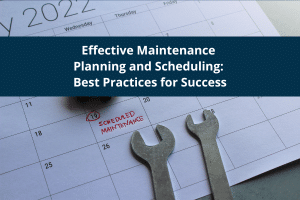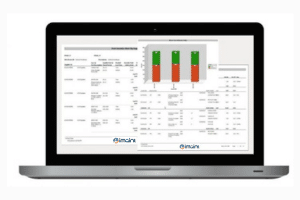Maintenance planning and scheduling are the foundations of effective maintenance management. They ensure that maintenance technicians are in the right place at the right time with the necessary tools. By prioritizing and organizing work efficiently, you can streamline maintenance processes and achieve better results.
Why Maintenance Planning and Scheduling Matter
Proper maintenance planning and scheduling offer numerous benefits:
- Efficient Use of Labor: Maximize the productivity of your maintenance team.
- Reduced Downtime: Minimize the time equipment is out of service.
- Lower Spare Parts Inventory: Maintain only the necessary spare parts, reducing excess inventory.
- Faster Job Completion: Speed up the execution of maintenance tasks.
- Cost Savings: Reduce operational costs by optimizing maintenance processes.
- Improved Workflow: Enhance the overall workflow in your maintenance operations.
- Reduced Injuries and Stress: Create a safer work environment and reduce stress for maintenance personnel.
To ensure success, follow these dos and don’ts for maintenance planning and scheduling.
Dos of Maintenance Planning and Scheduling
Pick the Right Maintenance Planner
Choose a highly skilled, qualified, and experienced maintenance technician as your maintenance planner. This person plays a crucial role in your maintenance organization and must gain the trust of the technicians. The planner should understand maintenance planning principles and practices to create effective work plans.
Provide Proper Training
After selecting the right person for the job, ensure they receive proper training. The maintenance planner should know how to use computerized maintenance management systems (CMMS) effectively. They must also be able to extract data from the software and generate meaningful reports.
Understand the Difference Between Planning and Scheduling
Planning involves determining what tasks need to be done, how to do them, and what resources are required. Scheduling, on the other hand, decides when to perform these tasks. It’s essential to plan before scheduling to ensure everything is in place for efficient execution.
Focus the Planner on Planning
Don’t burden the maintenance planner with multiple responsibilities. If they are tasked with too many duties, they won’t have enough time to focus on planning. Ensure that the planner’s primary role is to plan and schedule maintenance tasks.
Don’ts to Avoid in Maintenance Planning and Scheduling
Avoid Providing Poor Instructions
Ensure maintenance planners provide detailed job instructions. Maintenance personnel should be able to complete tasks without searching for additional information. Include estimated job duration, required tools, and materials in the instructions. Clear, simple instructions help all team members, from new technicians to seasoned mechanics.
Don’t Skip Feedback
After a maintenance job is complete, document detailed feedback. Vague feedback like “complete” or “fixed” doesn’t provide useful data. Comprehensive feedback helps maintenance planners learn and prepare better for future tasks. It also ensures that the CMMS captures valuable data for ongoing improvement.
Don’t Ignore Technician Feedback
Encourage maintenance technicians to provide feedback on preventive maintenance tasks. Planners should consider this feedback and make necessary adjustments. When technicians see their feedback implemented, they are more likely to continue providing valuable input.
Don’t Overlook KPIs
Measuring the effectiveness of maintenance planning and scheduling is crucial for continuous improvement. Monitor key performance indicators (KPIs) to identify growth opportunities and guide decision-making. While no single metric covers everything, various KPIs can provide a comprehensive view of your maintenance organization’s performance.
Key Takeaways for Effective Maintenance Planning and Scheduling
Follow these tips to reduce costs, improve equipment reliability, and boost the efficiency of your maintenance operations. Effective maintenance planning and scheduling will make your organization more competitive in the global marketplace. If you’re seeking a software solution to help achieve your maintenance goals, contact DPSI or sign up for a free 30-day trial of our industry-leading maintenance management software.





